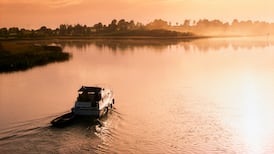My grandson Calvin (5) found this jawbone on Portmarnock beach. The molar- style teeth do not look they belong to a fish. Can you identify it please? – Milo Doyle, Dublin
Indeed, it is not a fish but the jawbone of a carnivorous mammal, most likely the common seal (which is less common than the larger grey seal).
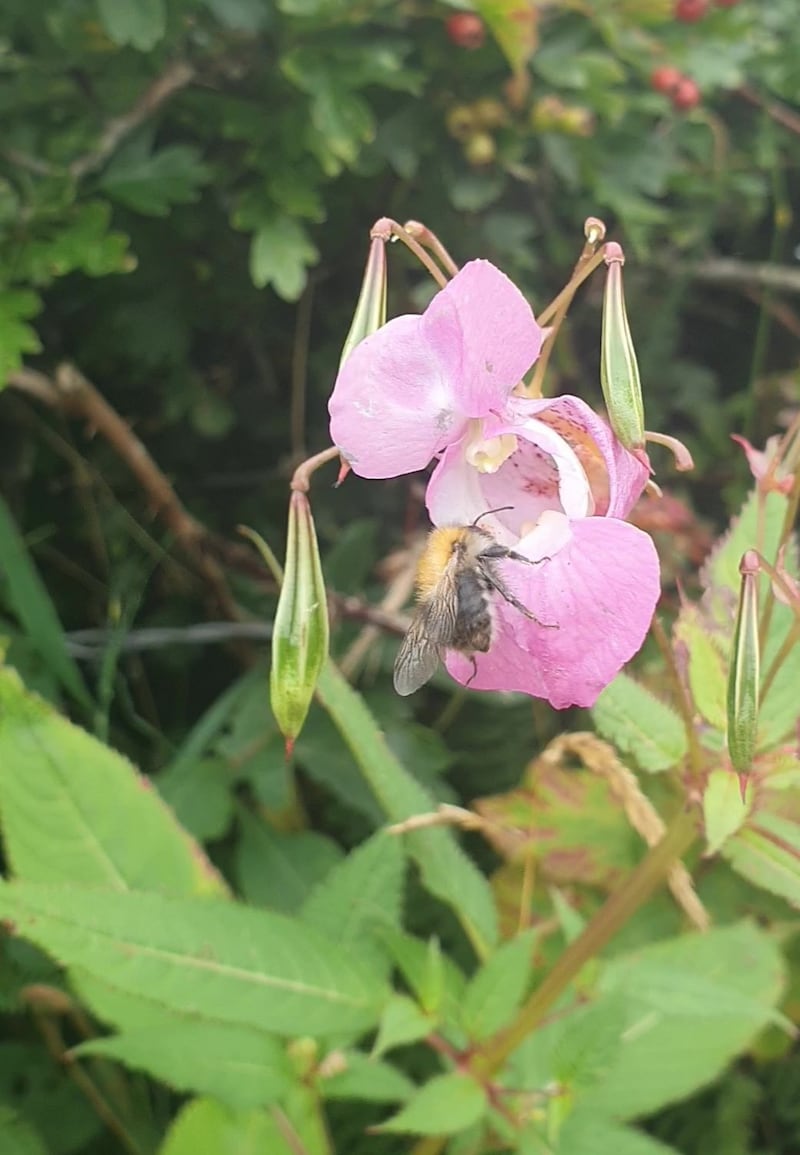
What are these orchids I've come across in the Fanad peninsula? They are common in the ditches here and have amazing exploding seeds. Are they an "escaped species"? – Michéal Coughlan
It is not an orchid but the invasive species Himalayan balsam. Bees love it, but it spreads rapidly due to the exploding seeds, outcompeting all other plants as it germinates in early summer. It is an annual, and when it dies back, the exposed bare soil is liable to erosion. Best pulled up before the seed heads form.
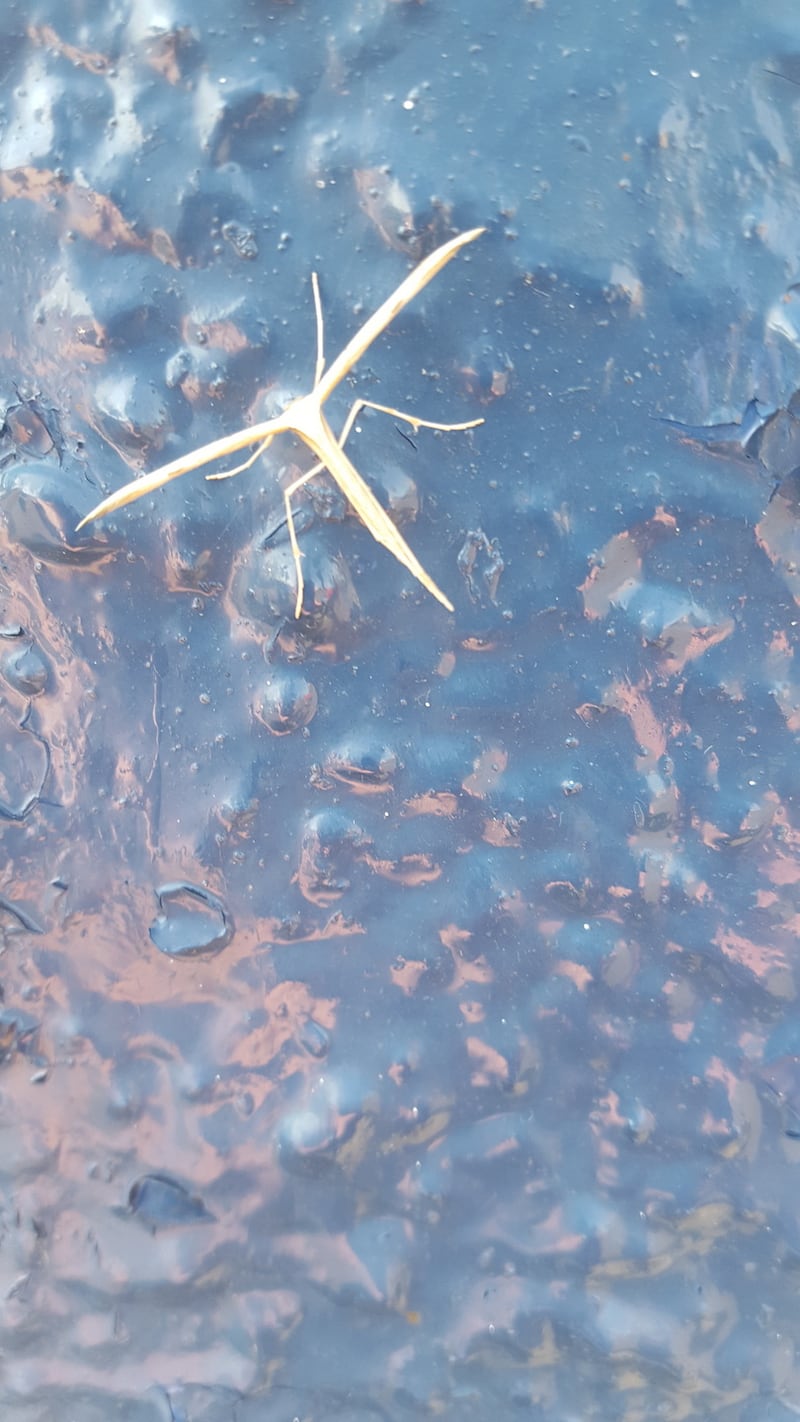
This T-shaped insect on a painted wall in Belmullet may or may not be a plume moth. – Bobby Carty
Full marks! It is a common plume moth, which rolls up its wings at rest in a T shape.
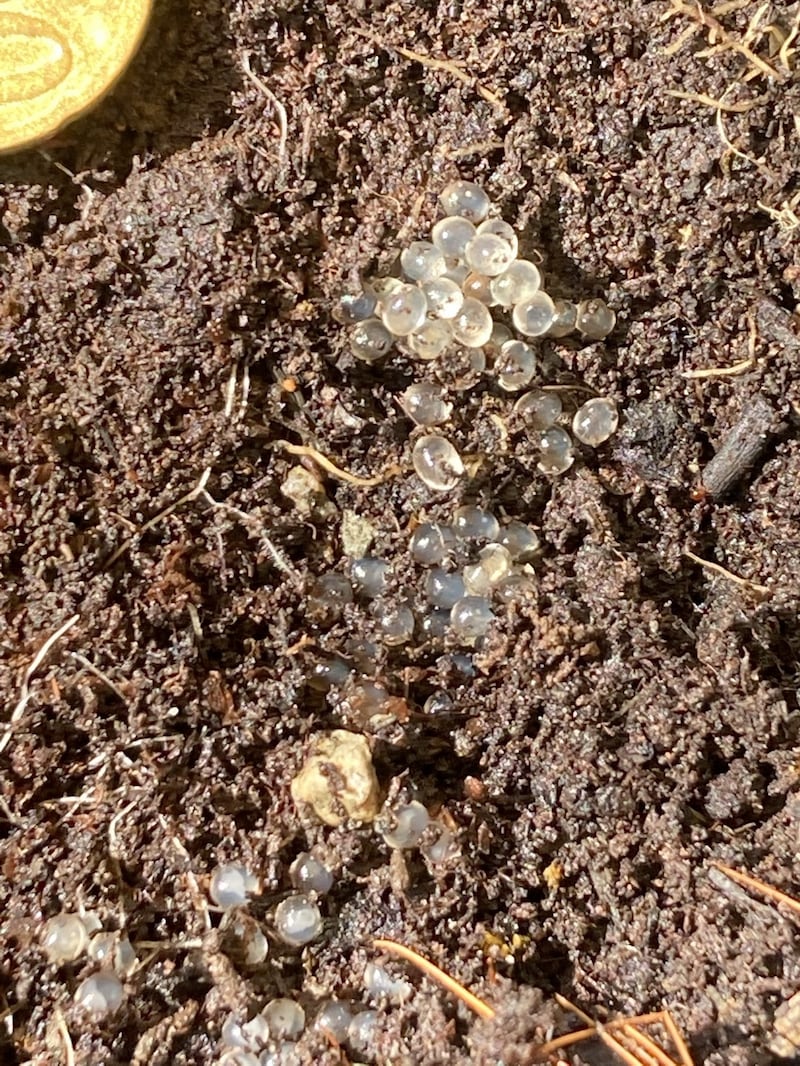
I lifted the top sod in a potted plant on my deck in Wexford and found these little eggs. To whom do they belong? – Eithne Mackell
They are snail's eggs. As snails are hermaphrodites, all can lay eggs. No wonder we have so many of them.
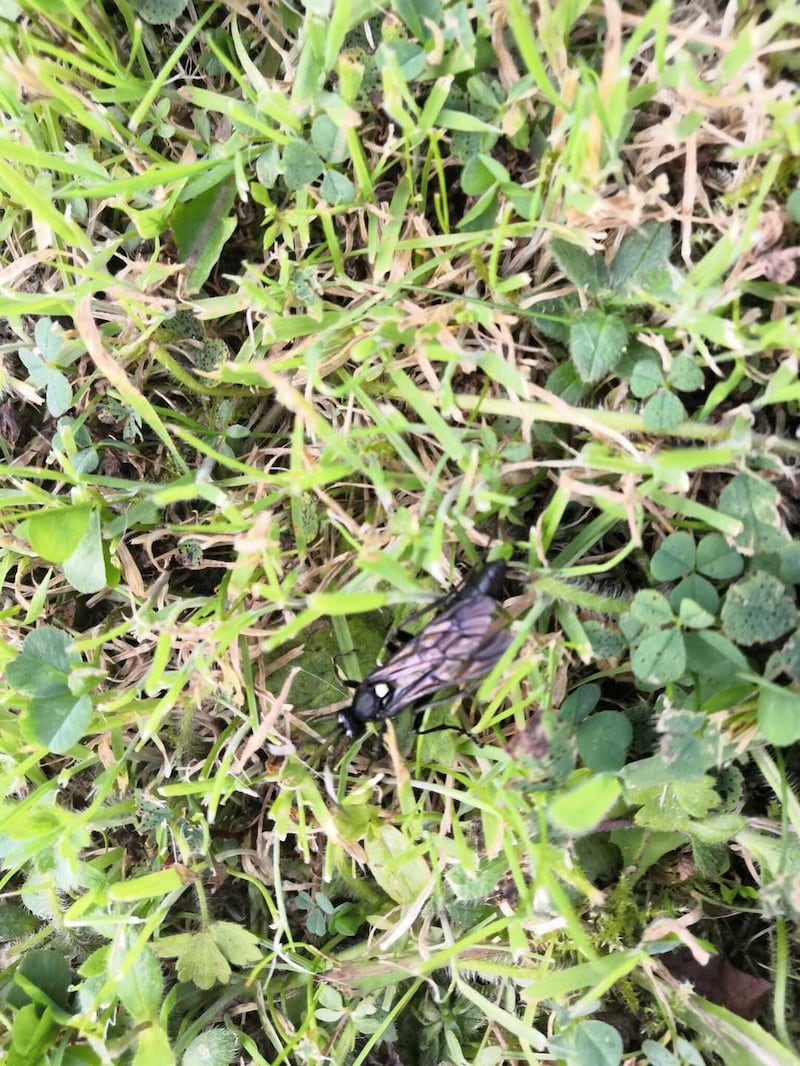
This large, black-winged flying insect, with a thick leathery-looking abdomen/tail about an inch long, was attacking a large elephant hawkmoth. What was going on? – Stephen, Cillian, Tom and Conn Cox
Jim Hardie of the Royal Entomological Society tells me that it is an ichneumonid wasp, which is a parasite of moths.

This lovely photo of two ringed plovers flying over Poulnasherry Bay in Clare was sent by John Glynn.
Have you a nature query, observation or photo you would like to share with The Irish Times? Submit it, with location of the image, via our website irishtimes.com/eyeonnature



